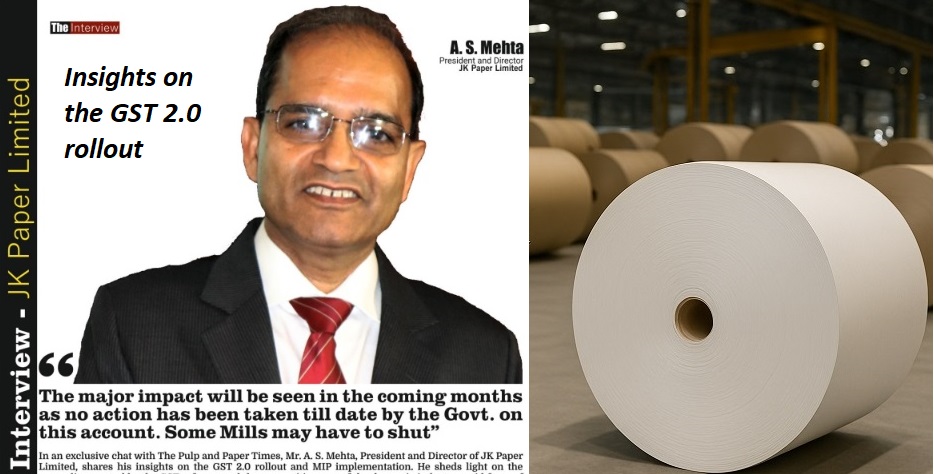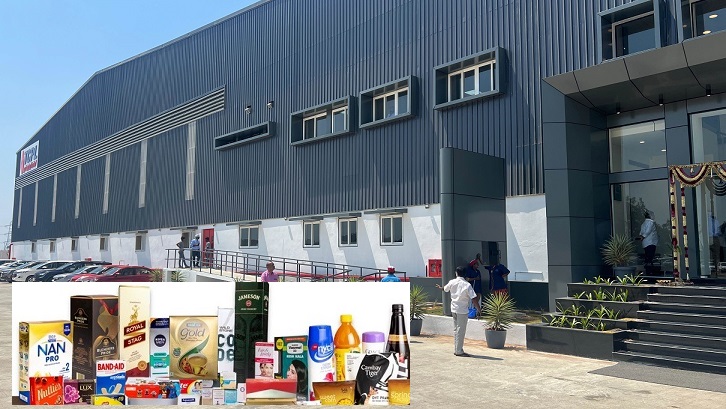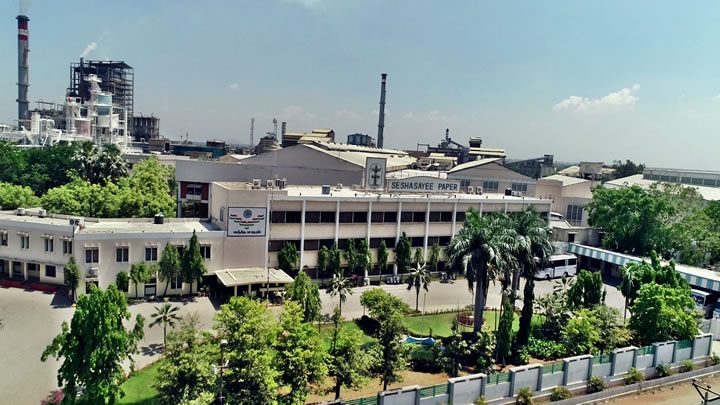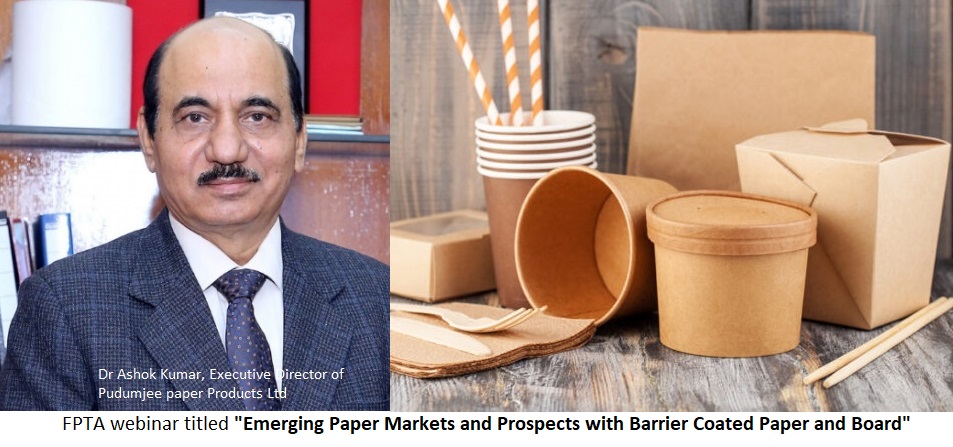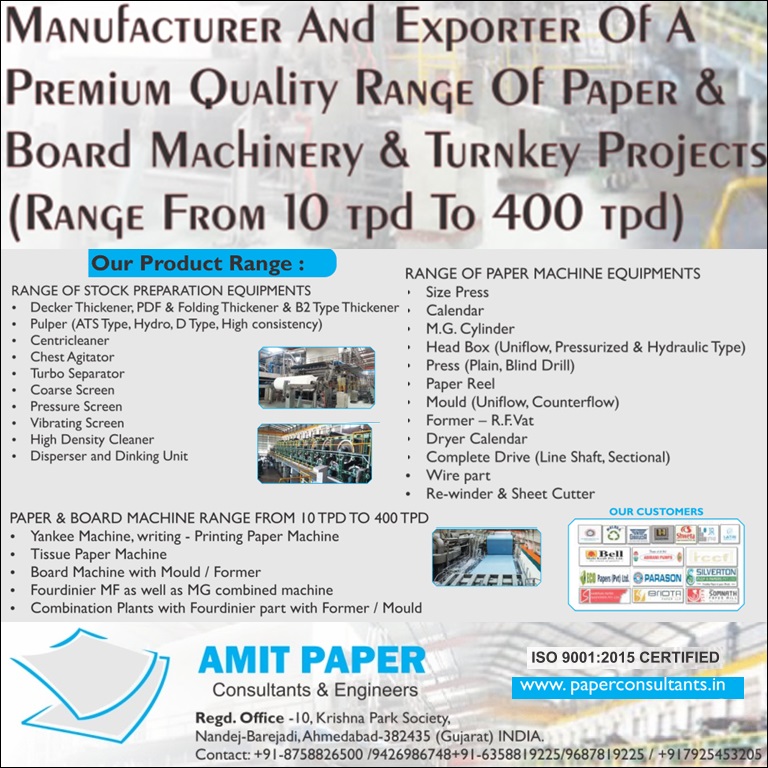Overview of the Indian Paper Industry: Outlook, Challenges, and Future by Emami Paper Mills CMO
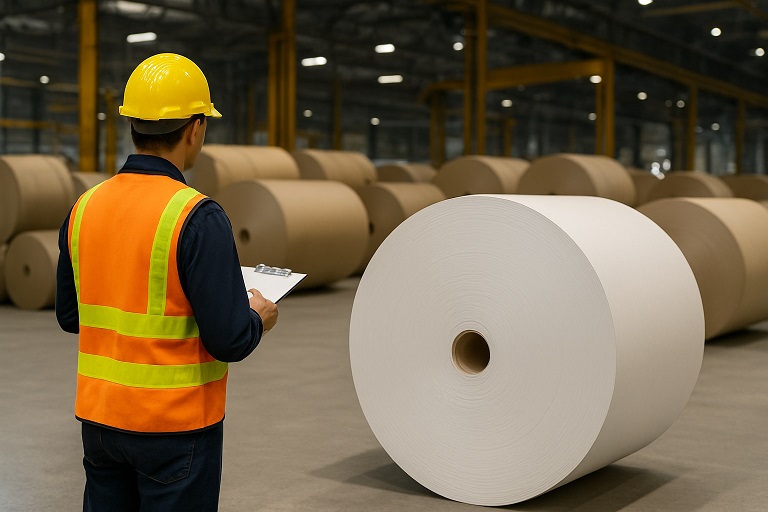
Overview of the Indian Paper Industry: Outlook, Challenges, and Future by Emami Paper Mills CMO
-RISI data reveals: One country sells paper at 40% higher prices domestically than in India, underscoring the dumping problem, says Emami Paper Mills CMO
-Indian Paper Industry Poised for Strong Growth, Packaging Segment Leading the Way
The Pulp and Paper Times | Hyderabad,
The Indian pulp and paper industry, valued at approximately INR 80,000 crore and employing over 2 million people directly, is set for a period of strong and diversified growth, particularly in packaging, according to Mr. Soumyajit Mukherjee, Chief Marketing Officer at Emami Paper Mills Ltd. Speaking at the inauguration of Papexpo, Mr. Mukherjee praised the event for showcasing a wide range of innovations beyond traditional displays, calling it a positive sign for the industry’s future.
Highlighting the sector’s significant socio-economic role, Mr. Mukherjee noted that the industry indirectly supports nearly 1 crore people, making it a key contributor to India’s GDP and rural employment. He emphasized that the industry’s various verticals — newsprint, writing and printing papers (both recycled and virgin), coated papers, kraft paper, packaging boards (recycled and virgin), specialty papers, and tissues — present unique growth patterns and challenges.
Industry Faces Threat from Cheap Imports, Calls for Balanced Trade Practices
Addressing the issue of imports, Mr. Soumyajit Mukherjee, CMO of Emami Paper Mills Ltd, clarified that while fair imports foster healthy competition and prevent abnormal profits, the dumping of paper and board at artificially low prices poses a serious threat to the Indian paper industry. Such practices, he warned, damage market sentiment, discourage large-scale investments, and could eventually leave India dependent on international suppliers. Citing data from the RISI index, he pointed out cases where one of the country sell paper domestically at prices up to 40% higher than in India, underscoring the dumping problem. Mr. Mukherjee urged the industry, trade associations, and the government to work together to curb dumping, maintain reasonable import prices, and create an environment that encourages investment, technological upgrades, and self-sufficiency in the long run.
Sector-wise Outlook
• Newsprint: Globally and in India, the segment is witnessing a decline due to digitalization, with a 50% drop in demand from pre-COVID levels. However, vernacular-language dailies could help sustain the segment in India, and Mr. Mukherjee predicted a potential revival of print media within five years as readers seek curated content over algorithm-driven digital feeds.
• Writing & Printing Paper: Growing at 3% CAGR in India (compared to 0.5–1% globally), driven by rising literacy rates, government educational initiatives, and rural penetration.
• Coated Paper: Facing slow growth (around 2–2.5% CAGR) as promotional materials move from print to digital formats.
• Kraft Paper: Experiencing robust 8.5% growth, boosted by the e-commerce boom, with further expansion expected in smaller towns and rural areas.
• Recycled Packaging Board: Growing at 6–7% CAGR, with rising quality standards and strong sustainability appeal.
• Virgin Packaging Board: Strong long-term growth potential (around 9% CAGR), supported by sustainable forestry initiatives and increasing demand for high-quality packaging.
• Tissue Paper: Though still a small market, demand is rising rapidly in urban areas for facial tissues, kitchen towels, and related products.
Global Trends & Sustainability Push
Mr. Mukherjee highlighted Asia-Pacific, led by India, China, and Southeast Asia, as the fastest-growing packaging market globally. He noted that North America is setting benchmarks in sustainability, while Europe is leading in recycling-oriented models. The ongoing global push to phase out single-use plastics presents “immense opportunities” for paper and paperboard innovations in India over the next 2–3 years.
Challenges Ahead
Despite the positive outlook, Mr. Mukherjee cautioned against key threats:
• Raw Material Scarcity: India relies on imports for much of its recycled fiber due to inadequate domestic waste paper management, and faces increasing competition for wood from other industries like plywood and MDF.
• Dumping of Imports: While fair imports ensure competition, predatory pricing by foreign suppliers undermines domestic players, discourages investment, and could lead to over-reliance on global markets.
He called for industry-wide collaboration with the government and trade bodies to curb dumping, improve waste paper segregation, and promote self-sufficiency.
Vision for the Future
Mr. Mukherjee urged the industry to focus on value addition, technology adoption, and scaling operations to achieve cost efficiencies, with the ultimate goal of making India a net exporter of paper and packaging products. “We are in the right industry, seeing consistent growth across most segments except newsprint,” he concluded. “Our focus should be on building a sustainable, self-reliant, and globally competitive paper sector.”
Web Title: Overview of the Indian Paper Industry: Outlook, Challenges, and Future by Emami Paper Mills CMO





 Join WhatsApp Group
Join WhatsApp Group Join Telegram Channel
Join Telegram Channel Join YouTube Channel
Join YouTube Channel Join Job Channel (View | Submit Jobs)
Join Job Channel (View | Submit Jobs) Join Buy Sell Channel (Free to Submit)
Join Buy Sell Channel (Free to Submit) Paper News Headlines Channel (Free to read)
Paper News Headlines Channel (Free to read)



